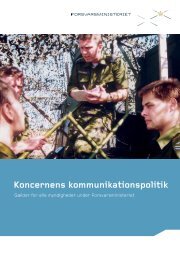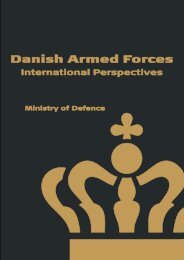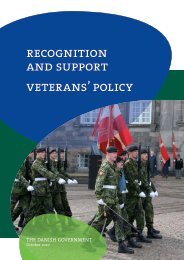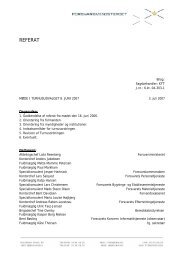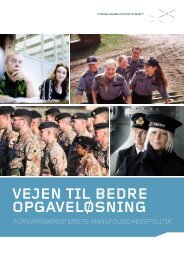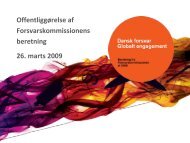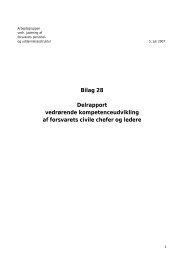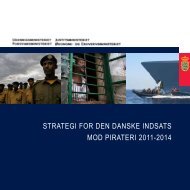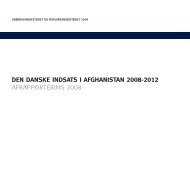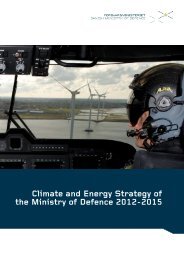Afghanistan Report 2009 - Isaf - Nato
Afghanistan Report 2009 - Isaf - Nato
Afghanistan Report 2009 - Isaf - Nato
Create successful ePaper yourself
Turn your PDF publications into a flip-book with our unique Google optimized e-Paper software.
<strong>Afghanistan</strong> <strong>Report</strong> <strong>2009</strong><br />
Framework for International<br />
Support to <strong>Afghanistan</strong><br />
Afghan grocers in the Panjway District of Kandahar Province.<br />
Expanding agricultural production was identified as a key<br />
priority at the international conference in support of <strong>Afghanistan</strong><br />
held in Paris on 12 June 2008. (© Canadian MoD)<br />
Bonn Conference (22 December 2001): Afghans<br />
met under UN auspices to decide on a plan for<br />
governing the country. The Afghan Interim Authority<br />
was inaugurated with a six-month mandate to be<br />
followed by a Transitional Authority (TA), paving<br />
the way to the approval of the Constitution (January<br />
2004) and Presidential elections (October 2004).<br />
Tokyo Conference (21-22 January 2002): Japan,<br />
the United States, the European Union and Saudi<br />
Arabia, co-hosted a ministerial Conference to<br />
discuss aid to <strong>Afghanistan</strong>. Donors pledged 4.5<br />
billion USD.<br />
The United Nations Assistance Mission to<br />
<strong>Afghanistan</strong> (UNAMA): established through Security<br />
Council Resolution 1401 (28 March 2002), helps<br />
to implement the Bonn Agreement. UNAMA’s<br />
guiding principle is to reinforce Afghan leadership<br />
and strenghten international cohesion in support of<br />
that leadership.<br />
Berlin Conference (1 April 2004): representatives<br />
from 65 nations and international organisations<br />
met in Berlin to support the reconstruction of<br />
<strong>Afghanistan</strong>. More than 8.2 billion USD were<br />
pledged.<br />
London Conference (1 February 2006): The<br />
Government of <strong>Afghanistan</strong> and the International<br />
Community signed a political agreement, the<br />
<strong>Afghanistan</strong> Compact, defining the principles of<br />
their cooperation for 2006-2011. The Compact<br />
identified three critical and interdependent pillars<br />
of activities: security; governance, rule of law<br />
and human rights; and economic and social<br />
development. The International Community agreed<br />
on a set of benchmarks and timelines to monitor<br />
implementation of the Compact and committed<br />
to improved aid effectiveness, transparency and<br />
accountability. Donors pledged 10.5 billion USD.<br />
Afghan National Development Strategy<br />
(21 April 2008): the ANDS is a Millennium<br />
Development Goal (MDG)-based plan that<br />
serves also as <strong>Afghanistan</strong>’s Poverty Reduction<br />
Strategy Paper (PRSP). The ANDS recognises<br />
the leadership of the Afghan Government in<br />
setting its developing priorities and represents the<br />
Road Map for joint action for 2008-2013.<br />
Joint Co-ordination and Monitoring Board<br />
(30 April 2008): the JCMB is the primary coordinating<br />
and monitoring mechanism established<br />
between the Afghan Government and the International<br />
Community, in which UNAMA plays a<br />
leading role, for ensuring the achievement of the<br />
<strong>Afghanistan</strong> Compact and monitoring the ANDS.<br />
Paris Conference (12 June 2008): this third<br />
International Conference held after the formation<br />
of the Afghan Government officially launched the<br />
ANDS. More than 80 donors decided to focus their<br />
assistance to the GIRoA on agriculture, irrigation<br />
and energy sectors, pledging more than 21 billion<br />
USD.<br />
33



